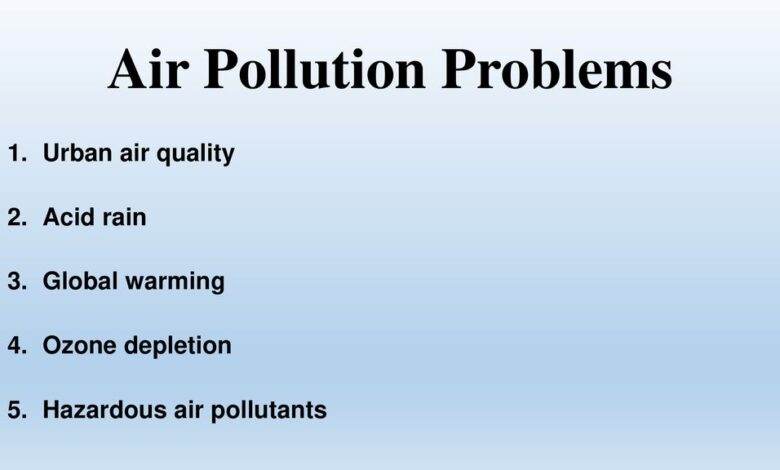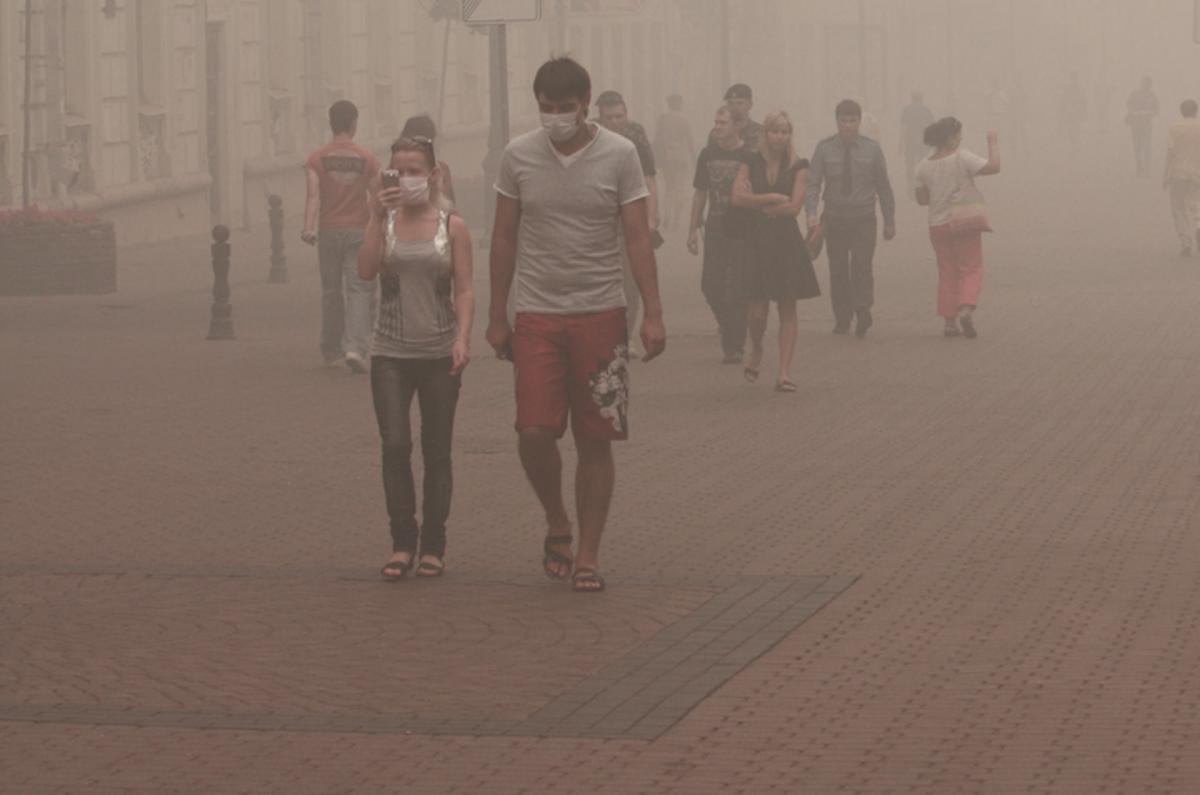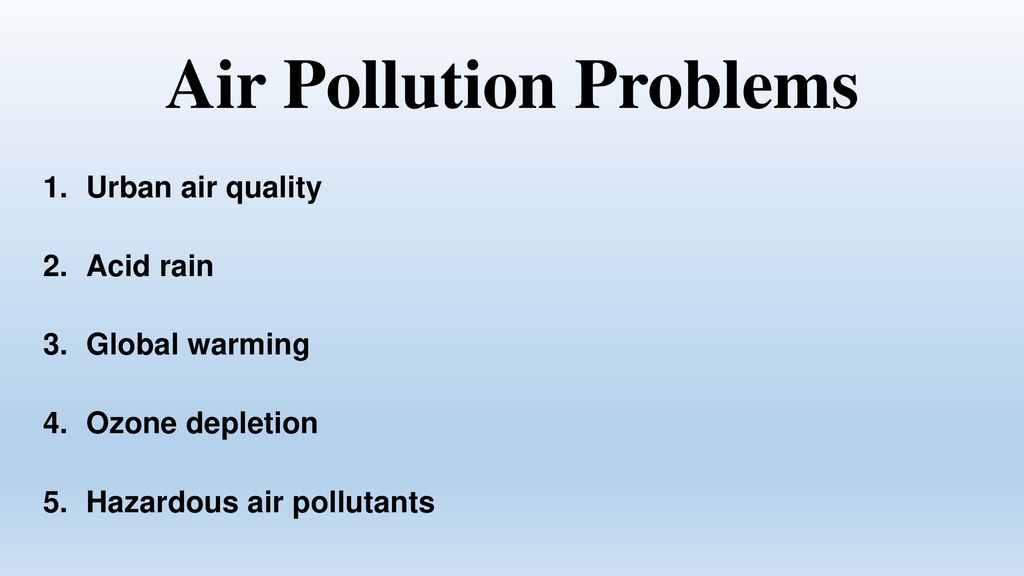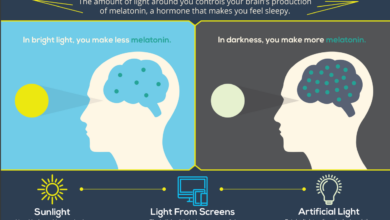
Study Links Air Pollution to Poor Focus and Social Struggles
Study links air pollution to poor focus and social struggles – a shocking revelation, right? We often think of pollution as an environmental issue, but this research dives deep into how dirty air impacts our brains and social lives. It’s not just about coughing fits; it’s about how the air we breathe affects our ability to concentrate, interact, and even thrive in our communities.
This post explores the surprising connections between air quality and our mental and social well-being, uncovering the hidden costs of polluted air.
The research highlights specific pollutants and their mechanisms of action within the brain, demonstrating a clear correlation between exposure and diminished attention spans. It also delves into the social ramifications, exploring how pollution might exacerbate existing challenges and disproportionately affect vulnerable populations like children and the elderly. We’ll examine potential solutions and discuss what the future holds for research in this critical area.
Air Pollution and Cognitive Function

Source: indiatvnews.com
The detrimental effects of air pollution extend far beyond respiratory issues; a growing body of research strongly links exposure to poor air quality with significant cognitive impairment. This isn’t just about a slight dip in concentration; studies indicate a clear association between air pollution and reduced cognitive performance across various domains, impacting learning, memory, and overall mental sharpness. Understanding this connection is crucial for developing effective public health strategies and mitigating the long-term consequences of environmental pollution.Air pollution’s impact on cognitive function is a complex interplay of factors, but the evidence is increasingly compelling.
Studies have shown consistent correlations between elevated levels of specific pollutants and measurable declines in cognitive abilities. This isn’t simply a matter of correlation; the underlying mechanisms through which these pollutants exert their effects are gradually being elucidated, providing a more complete picture of this critical public health concern.
Specific Pollutants and Cognitive Impairment
Several air pollutants have been identified as particularly harmful to cognitive function. These include particulate matter (PM2.5 and PM10), ozone (O3), nitrogen dioxide (NO2), and carbon monoxide (CO). PM2.5, for instance, consists of tiny particles that can penetrate deep into the lungs and even cross the blood-brain barrier, potentially causing inflammation and oxidative stress within the brain. Ozone, a major component of smog, is a powerful respiratory irritant that can also affect the central nervous system.
Exposure to high levels of these pollutants has been linked to decreased performance on cognitive tests assessing memory, attention, and executive function. For example, studies in children living near heavily trafficked areas have shown a statistically significant correlation between PM2.5 exposure and lower scores on standardized tests.
Mechanisms of Air Pollution’s Impact on the Brain
The precise mechanisms by which air pollution affects the brain are still under investigation, but several pathways are being explored. One key mechanism is inflammation. Inhaled pollutants can trigger inflammatory responses in the brain, leading to damage to neurons and glial cells. This inflammation can disrupt neurotransmission and impair synaptic plasticity, the brain’s ability to adapt and learn.
Oxidative stress, an imbalance between the production of free radicals and the body’s ability to neutralize them, is another critical factor. Air pollutants can increase the production of free radicals, leading to cellular damage and impaired cognitive function. Furthermore, some pollutants can directly affect the blood-brain barrier, increasing its permeability and allowing harmful substances to enter the brain.
This disruption of the blood-brain barrier can further exacerbate inflammation and oxidative stress. For instance, studies have shown that exposure to high levels of PM2.5 can lead to increased permeability of the blood-brain barrier in animal models, resulting in neuroinflammation and cognitive deficits.
Impact on Focus and Attention
Air pollution’s impact extends beyond respiratory issues; emerging research strongly suggests a significant correlation between exposure to pollutants and cognitive deficits, particularly affecting focus and attention. This isn’t simply about feeling slightly sluggish; studies indicate measurable impairments in attention span and executive function, impacting academic performance, workplace productivity, and overall well-being. Understanding the specific mechanisms and varying effects of different pollutants is crucial for developing effective mitigation strategies.Numerous studies have demonstrated a link between air pollution exposure and decreased attention span.
For instance, research published in
Environmental Health Perspectives* showed a consistent association between higher levels of particulate matter (PM2.5) and reduced performance on attention tests in children. These studies often utilize standardized cognitive assessments to measure attention, working memory, and processing speed, comparing results between groups exposed to varying levels of air pollution. The results consistently point towards a negative correlation
higher pollution exposure is linked to poorer cognitive performance.
Specific Pollutant Effects on Attention, Study links air pollution to poor focus and social struggles
Different air pollutants exert varying effects on attention and focus. Particulate matter (PM2.5 and PM10), known for their ability to penetrate deep into the lungs, is frequently implicated in studies showing impaired attention. These tiny particles can trigger inflammation and oxidative stress in the brain, potentially disrupting neuronal communication and impacting cognitive function. Nitrogen dioxide (NO2), a common component of vehicle exhaust, has also been linked to attention deficits, particularly in children.
Ozone (O3), a major component of smog, is another pollutant associated with reduced cognitive performance, possibly through its effects on the respiratory system and its subsequent impact on brain function. While the exact mechanisms are still under investigation, the consistent findings across multiple studies suggest a strong causal link.
Hypothetical Study Design: Air Pollution and Attention Deficits in Children
A longitudinal study could effectively investigate the link between air pollution and attention deficits in children. The study would recruit a large cohort of children from diverse socioeconomic backgrounds residing in areas with varying levels of air pollution. Air pollution levels at each participant’s home would be monitored continuously using sensors, capturing exposure data over an extended period.
Children’s cognitive function would be assessed annually using standardized neuropsychological tests focusing on attention, working memory, and executive functions. The study would control for confounding factors such as socioeconomic status, parental education, nutrition, and pre-existing health conditions. By analyzing the data collected over several years, researchers could establish a more precise correlation between cumulative air pollution exposure and the development of attention deficits.
Furthermore, this approach would allow investigation into potential sensitive periods of development where children might be particularly vulnerable to the negative effects of air pollution. The results would contribute valuable data to inform public health policies aimed at protecting children’s cognitive development.
Social Struggles and Air Pollution
Air pollution doesn’t just affect our lungs; mounting evidence suggests a strong link between poor air quality and significant social challenges. The invisible particles and gases in polluted air can subtly, yet powerfully, impact our brains and behavior, leading to increased social difficulties and exacerbating existing inequalities. This connection is complex, involving multiple pathways and interacting factors, but understanding these links is crucial for developing effective public health strategies.The pathways linking air pollution exposure to social difficulties are multifaceted.
Exposure to pollutants like particulate matter (PM2.5) and ozone has been associated with increased inflammation in the brain, which can disrupt the delicate balance of neurotransmitters responsible for regulating mood, behavior, and social interactions. This inflammation can manifest as increased aggression, irritability, anxiety, and depression. Furthermore, air pollution can impair cognitive functions like executive function and social cognition, making it harder to understand and respond appropriately in social situations, leading to misunderstandings and conflict.
These cognitive impairments can also affect impulse control, potentially increasing the likelihood of impulsive and antisocial behaviors.
Air Pollution’s Impact on Social Interactions
Real-world scenarios vividly illustrate the detrimental effects of air pollution on social dynamics. Studies have shown a correlation between high levels of air pollution and increased crime rates, particularly violent crimes. This isn’t to say pollution directlycauses* crime, but it suggests a potential contributing factor by influencing aggression and impulsive behavior. Similarly, in areas with consistently poor air quality, children may struggle more in school due to impaired cognitive function, leading to social isolation and decreased academic performance.
This can create a cycle of disadvantage, perpetuating social inequalities. In workplaces, reduced cognitive performance due to air pollution could lead to increased workplace conflict and decreased productivity.
| Impact | Mechanism | Population Affected | Mitigation Strategies |
|---|---|---|---|
| Increased Aggression and Violence | Neuroinflammation, impaired impulse control due to exposure to PM2.5 and other pollutants. | All populations, but potentially higher risk in already marginalized communities. | Improved air quality monitoring and regulation, public awareness campaigns promoting healthy lifestyles. |
| Anxiety and Depression | Neuroinflammation, hormonal imbalances triggered by air pollution exposure. | All populations, particularly vulnerable groups like children and the elderly. | Access to mental health services, stress reduction programs, community support networks. |
| Impaired Social Cognition | Neurological damage caused by long-term exposure to pollutants, affecting executive function and social processing. | Children and adolescents, potentially impacting their social development and future opportunities. | Early intervention programs, educational initiatives focusing on social-emotional learning. |
| Social Isolation and Exclusion | Reduced cognitive function and increased health problems leading to decreased participation in social activities. | Individuals with pre-existing health conditions or living in polluted areas. | Improved access to healthcare, community-based support programs, promoting inclusive social environments. |
Vulnerable Populations
Air pollution doesn’t affect everyone equally. Certain demographic groups bear a disproportionately heavier burden of its cognitive and social consequences, experiencing more severe impacts on their mental well-being and social functioning. Understanding these vulnerabilities is crucial for developing targeted interventions and protective measures.The heightened susceptibility of these groups stems from a complex interplay of biological, social, and environmental factors.
Pre-existing health conditions, developmental stages, and socioeconomic circumstances all contribute to their increased risk. This vulnerability isn’t merely a matter of degree; it’s a matter of fundamental differences in how the body and mind respond to pollutants.
Children’s Vulnerability to Air Pollution
Children are particularly vulnerable to the neurotoxic effects of air pollution. Their brains are still developing, making them more susceptible to the damaging effects of pollutants like particulate matter and nitrogen dioxide. Their smaller lungs and higher respiratory rates mean they inhale more pollutants per unit of body weight than adults. Studies have linked prenatal and early childhood exposure to air pollution with lower IQ scores, impaired cognitive function, and increased behavioral problems.
Furthermore, children spend more time outdoors, increasing their exposure. This heightened vulnerability underscores the urgent need for clean air policies that prioritize children’s health.
The Elderly and Air Pollution’s Impact
The elderly population also experiences a heightened sensitivity to air pollution. Age-related decline in respiratory and cardiovascular function makes them more vulnerable to the respiratory illnesses and cardiovascular problems exacerbated by air pollution. Pre-existing conditions like asthma, heart disease, and chronic obstructive pulmonary disease (COPD) are significantly worsened by poor air quality. This increased susceptibility translates to a higher risk of hospitalization, reduced quality of life, and increased mortality.
The cognitive impacts, including increased risk of dementia and cognitive decline, are also more pronounced in this age group.
Individuals with Pre-existing Conditions
Individuals with pre-existing respiratory or cardiovascular conditions are at significantly increased risk from air pollution exposure. Conditions like asthma, COPD, and heart disease are exacerbated by pollutants, leading to increased frequency and severity of symptoms, hospitalizations, and even death. The inflammatory response triggered by air pollution can worsen underlying conditions, making individuals more vulnerable to respiratory infections and cardiovascular events.
Even seemingly mild air pollution episodes can trigger serious health consequences in this population.
Visual Representation of Disproportionate Impact
Imagine a bar graph. The horizontal axis represents different demographic groups: children (0-18 years), adults (18-65 years), and the elderly (65+ years). The vertical axis represents the severity of cognitive and social impacts of air pollution, ranging from mild to severe. The bar representing children extends significantly higher than the others, illustrating their greater vulnerability. The bar for the elderly is also notably taller than the adult bar.
Within each bar, different shades could represent the severity of the impact – a darker shade indicating severe consequences, lighter shades representing milder impacts. This visual clearly shows how the impact is not evenly distributed, with children and the elderly experiencing the most severe consequences. Further segmentation within each bar could represent individuals with pre-existing conditions, further highlighting their disproportionate vulnerability.
Mitigation and Public Health Strategies: Study Links Air Pollution To Poor Focus And Social Struggles

Source: yimg.com
The alarming link between air pollution and cognitive impairment necessitates a multi-pronged approach encompassing public health interventions, urban planning strategies, and widespread public awareness. Addressing this issue requires a concerted effort from governments, communities, and individuals to significantly improve air quality and protect public health.Improving air quality and mitigating the negative impacts on cognitive function and social well-being demands a comprehensive strategy.
This involves reducing pollution sources, implementing effective monitoring systems, and empowering individuals with the knowledge to protect themselves and advocate for change. A holistic approach is crucial, combining technological solutions with community engagement and robust public health initiatives.
Seriously, I was reading about a study linking air pollution to impaired cognitive function, affecting focus and even social interactions. It got me thinking about broader health impacts, and I wondered if there are early warning signs for other conditions. That’s when I stumbled upon this fascinating article exploring whether an eye test, as discussed in can eye test detect dementia risk in older adults , could be a potential indicator.
Coming back to air pollution, it’s clear that environmental factors play a huge role in overall well-being.
Reducing Air Pollution Sources
Significant reductions in air pollution necessitate targeting the primary sources. This includes transitioning to cleaner energy sources, such as solar and wind power, to reduce reliance on fossil fuels. Stringent regulations on industrial emissions, coupled with the adoption of cleaner technologies, are also vital. Furthermore, promoting the use of public transportation, cycling, and walking, alongside the implementation of stricter vehicle emission standards, can drastically reduce vehicular pollution in urban areas.
Investing in electric vehicle infrastructure and promoting their adoption among the public are also crucial steps. For example, cities like Oslo, Norway, have successfully implemented policies favoring electric vehicles, leading to a notable decrease in air pollution levels.
Improving Air Quality in Urban Environments
Urban planning plays a critical role in improving air quality. The creation of green spaces, such as parks and urban forests, acts as natural air filters, absorbing pollutants and improving air circulation. Strategic placement of green infrastructure, including green roofs and walls, can further enhance air quality within densely populated areas. Efficient waste management systems are also essential to reduce the release of harmful pollutants.
For instance, the implementation of comprehensive recycling programs and responsible waste disposal practices can significantly minimize air pollution caused by landfills and incineration. Furthermore, urban design that prioritizes pedestrian and cyclist-friendly infrastructure encourages active transportation, thereby reducing reliance on private vehicles.
Public Awareness Campaigns and Education
Educating the public about the detrimental effects of air pollution on cognitive function and social well-being is crucial for effective mitigation. Public awareness campaigns should highlight the link between poor air quality and health problems, emphasizing the importance of personal protective measures, such as wearing masks in areas with high pollution levels. Educational initiatives should target various demographics, including children, adults, and vulnerable populations, providing accessible information on air quality monitoring, health risks, and mitigation strategies.
This includes promoting sustainable lifestyle choices, such as reducing energy consumption and opting for eco-friendly products. Successful campaigns often utilize a multi-media approach, combining social media engagement, public service announcements, and community outreach programs to maximize reach and impact. For example, many cities now provide real-time air quality data on mobile apps, allowing citizens to make informed decisions about outdoor activities.
Future Research Directions
While significant progress has been made in understanding the detrimental effects of air pollution on cognitive and social function, numerous knowledge gaps remain. Further research is crucial to refine our understanding of these complex relationships, inform effective public health interventions, and ultimately protect vulnerable populations. This necessitates a multi-faceted approach, incorporating diverse methodologies and focusing on specific research questions.The existing literature primarily focuses on associations, leaving causal mechanisms largely unexplored.
Furthermore, the interaction between different pollutants, socioeconomic factors, and individual susceptibility requires deeper investigation. Longitudinal studies, incorporating advanced statistical techniques, are particularly needed to disentangle these intricate relationships.
Longitudinal Studies of Cognitive Development and Air Pollution Exposure
Longitudinal studies tracking individuals from childhood through adulthood are essential to understanding the long-term impacts of air pollution exposure on cognitive development and social outcomes. These studies should account for multiple air pollutants, using advanced statistical models to control for confounding factors like socioeconomic status and pre-existing health conditions. For instance, a study could follow a cohort of children living in areas with varying levels of air pollution, assessing their cognitive performance at regular intervals using standardized tests and neuropsychological evaluations.
The data could then be analyzed to determine the cumulative effect of pollution exposure on cognitive function across different developmental stages. This approach allows researchers to observe the progression of cognitive changes over time and establish more robust causal links between air pollution and cognitive decline.
Investigating the Mechanisms Linking Air Pollution and Social Function
The mechanisms through which air pollution impacts social interactions and behaviors are not fully understood. Future research should investigate the potential pathways involved, such as inflammation, neurotransmitter dysregulation, and hormonal imbalances. For example, studies could examine the relationship between air pollution exposure and biomarkers of inflammation (e.g., C-reactive protein) and their association with social anxiety or aggression. Furthermore, brain imaging techniques (e.g., fMRI) could be used to investigate the neural correlates of social cognitive deficits in individuals exposed to high levels of air pollution.
This could provide crucial insights into the underlying biological processes that link air pollution to social dysfunction.
Developing and Validating Air Pollution Exposure Assessment Methods
Accurate assessment of air pollution exposure is crucial for robust epidemiological studies. Future research should focus on developing and validating more precise exposure assessment methods, including the use of personal air monitors and advanced spatial modeling techniques. This includes incorporating real-time data from sensor networks and satellite imagery to create more detailed and accurate pollution maps. For example, comparing exposure estimates from personal monitors with those from fixed-site monitors would help refine the accuracy of exposure assessments.
Furthermore, incorporating data on individual activity patterns and micro-environmental factors could further improve the precision of exposure estimates. Improved exposure assessment is crucial for establishing stronger associations between air pollution and health outcomes.
Last Word

Source: slideplayer.com
The evidence is mounting: air pollution isn’t just an environmental problem; it’s a public health crisis with far-reaching consequences for our cognitive abilities and social interactions. From impaired focus and increased aggression to heightened anxiety and difficulties in social cognition, the impact is undeniable. While the challenges are significant, understanding the mechanisms and identifying vulnerable populations is the first step towards implementing effective mitigation strategies.
Investing in cleaner air is not just an environmental imperative; it’s an investment in our collective mental and social well-being. Let’s breathe easier, together.
Questions and Answers
What specific pollutants are most harmful?
Studies point to particulate matter (PM2.5 and PM10), nitrogen dioxide (NO2), and ozone (O3) as particularly damaging to cognitive function.
How can I protect myself and my family?
Reduce time spent outdoors during high-pollution periods, use air purifiers indoors, and support policies promoting cleaner air.
Are there long-term effects of air pollution exposure?
Yes, chronic exposure can lead to long-term cognitive decline and increased risk of neurodegenerative diseases.
What role does socioeconomic status play?
Lower-income communities often experience higher levels of air pollution, exacerbating existing health disparities.





